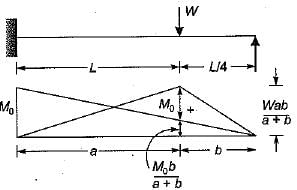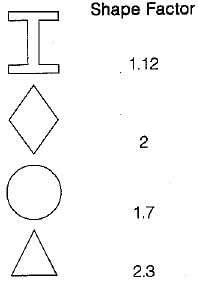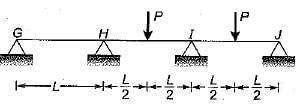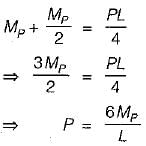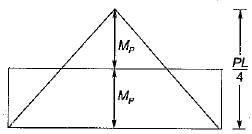Test: Plastic Analysis - 2 - Civil Engineering (CE) MCQ
15 Questions MCQ Test - Test: Plastic Analysis - 2
A propped cantilever beam of uniform moment capacity M0 is shown in figure below.

What is the collapse load W?

A prismatic beam (shape factor, $) fixed at both ends carries UDL throughout the span. What is the ratio of collapse load to yield load?
A simply supported beam of uniform cross-section has span L and is loaded by a point load P at its mid-span. What is the length of the elastoplastic zone of the plastic hinge?
In a T-section shown in figure below, what is the distance of plastic neutral axis as measured down from top?
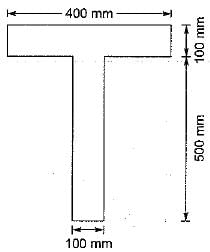
Arrange the following cross-sections in the increasing order of their respective shape factors

Position of plastic hinge in the beam shown in figure subjected to collapse ioad will be

The plastic hinge formed in a collapse mechanism are 4 and the indeterminacy is 3. The collapse is
The effect of axial force and shear force on the plastic moment capacity of a section are
The plastic section modulus for a rectangular section of width b and depth d is
Which of the following conditions is to be satisfied both in elastic and plastic analysis?
Consider the following assumptions made in the plastic theory
1. Distribution of strain across the section is linear
2. There is an axis of symmetry in the cross- section
3. The influence of normal and shearing forces is neglected
4. Strain energy stored due to elastic bending is ignored
Which of these assumptions are correct?
A continuous beam is loaded as shown in the figure below. Assuming a plastic moment capacity equal to Mp, the minimum load at which the beam would collapse is
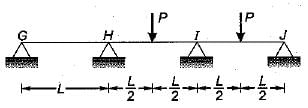
For an I-beam, shape factor is 1.12. The factor of safety in bending is 1.5. if the allowable stress is increased by 20% for wind and earthquake loads, then the load factor is


